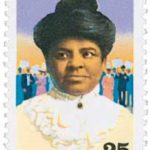The First Amendment Academy is a hub for quick, engaging quizzes from Freedom Forum, which also provides educational resources through NewseumED. The quizzes test middle school and high school students’ knowledge with real-world scenarios, interactive activities and thought-provoking questions that make learning these five fundamental freedoms fun, fast and relevant.
Decoding Media Bias
Students will examine where people in the U.S. get their news, how news selection amplifies one’s political views, and how media organizations decide to cover stories.
Landmark Supreme Court Case – New York Times v. United States (1971)
New York Times v. United States, better known as the “Pentagon Papers” case, was a decision expanding freedom of the press and limits on the government’s power to interrupt that freedom. President Richard Nixon used his executive authority to prevent the New York Times from publishing top secret documents pertaining to U.S. involvement in the Vietnam War. In a 6-3 decision, the Court ruled that the President’s attempt to prevent the publication was a violation of First Amendment protections for press freedom. This lesson has students explore the background of the New York Times v. United States, the arguments made during the case and its legacy.
From Watergate to Campaign Finance Reform
This 12-minute video is useful for any lesson that introduces students to the Watergate scandal, and any lesson focused on the constitutional and political challenges that complicate the regulation of campaign contributions. After clarifying the connection between the Watergate break-in and subsequent campaign finance scandal, the video documents how campaign finance regulations created in the wake of Watergate would eventually be manipulated by donors seeking to convert money into political influence. The video helps students make the connection between the history of Watergate and current controversies surrounding campaign finance, and to see how, after decades of attempted reforms, the United States is once again experiencing the same unregulated flow of campaign cash that helped give rise to the issues in the 1970s.
Presidents vs. Press: How Pentagon Papers Leak Set Up First Amendment Showdowns
This 12-minute video clarifies the connections between the New York Times Co. v. United States Supreme Court case and the recent battles that Presidents Obama and Trump have fought to contain national security leaks. Focusing on the broader issues of freedom of the press in a democracy, the video helps students draw a line between the New York Times decision from 1971 and the ongoing disputes between the public’s right to know and the president’s right to secrecy. Useful for examining the First Amendment and the role of the press in a democratic society, the video also provides students with the historical context surrounding the Pentagon Papers, and the Vietnam War and consequences of the New York Times court decision.
Freedom of the Press
Students explore the scope and limitations of the First Amendment provision that protects freedom of the press. The lesson poses a hypothetical scenario involving student journalists handling private information. After a brief class discussion, students investigate the history, various interpretations, and modern relevance of First Amendment freedom of the press protections in the Interactive Constitution. The lesson builds on the freedom of speech lesson plan by asking students to compare and contrast the freedoms of speech and press through discussion questions including: How are speech and press related? and How are speech and press key to democratic functions?
Free Speech Essentials
Do your students know what they’re free to say online? At school? On a public street corner? From censorship to cyberbullying, the First Amendment and the freedoms it protects are as hotly contested as ever. This EDCollection explores 16 free speech debates ranging from the founding of our nation to recent headlines to illustrate what free speech actually means, where it comes from, and how far it can go. Whether you’re a social studies teacher looking for a complete unit or an English teacher looking to spend a single class period on free expression, there’s something for everyone. Free registration required.
Ida B. Wells and Her Crusade for Racial Justice
Free Press and SCOTUS: Incorporating Case Studies in the Classroom
This lesson will ask students to engage with landmark freedom of press case studies exploring how the Supreme Court has ruled on First Amendment issues and has tried to balance competing values in our democracy.
Media Literacy: Making Sense of the 24/7 News Cycle
A free press is essential to the success of a democracy. As the media has evolved over time to include radio, television, internet and now smart phones and social media apps, the ability in “being capable to read them” needs examining. This lesson guides students through analysis of social media posts, the definition of terms relevant to the media, and provides tools for identifying quality sources for examination of current political issues. This lesson accompanies the Talking Turkey: Taking the ‘Dis’ Out of Civil Discourse program as well as YLI and American Evolution’s First Freedom Wall. Free registration is required to access the lesson plan.
